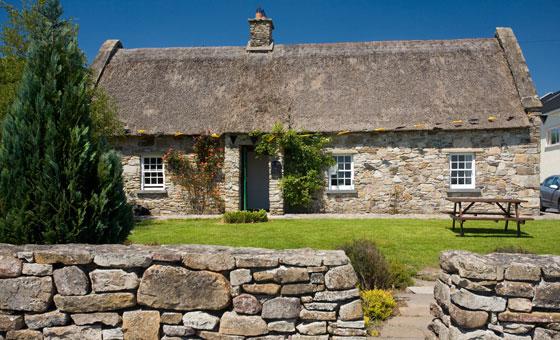Experience life in the 1800's
This replica thatched cottage gives visitors a sense of what daily life must have been like for most people in rural Ireland in the 1800s.
Ireland’s cottages evolved over centuries. While each community had its own variations, most cottages were one storey high and one room wide. The windows and doors were located on the side walls, with a chimney stack along the roof. The walls of the cottage were built of local stone or mud; the roof was thatched with reeds or straw.
